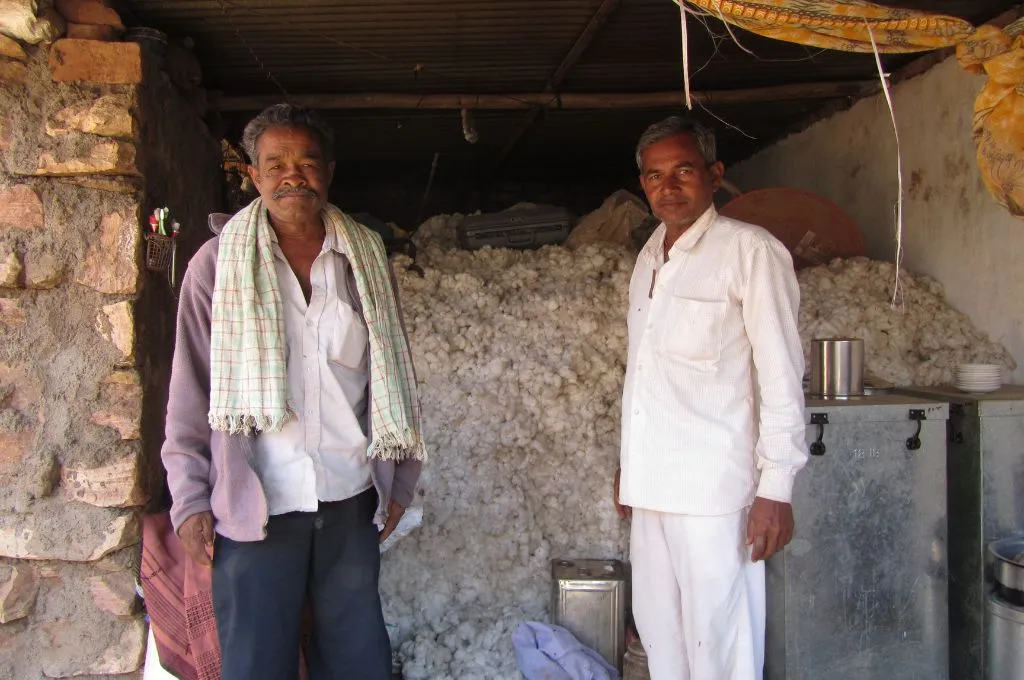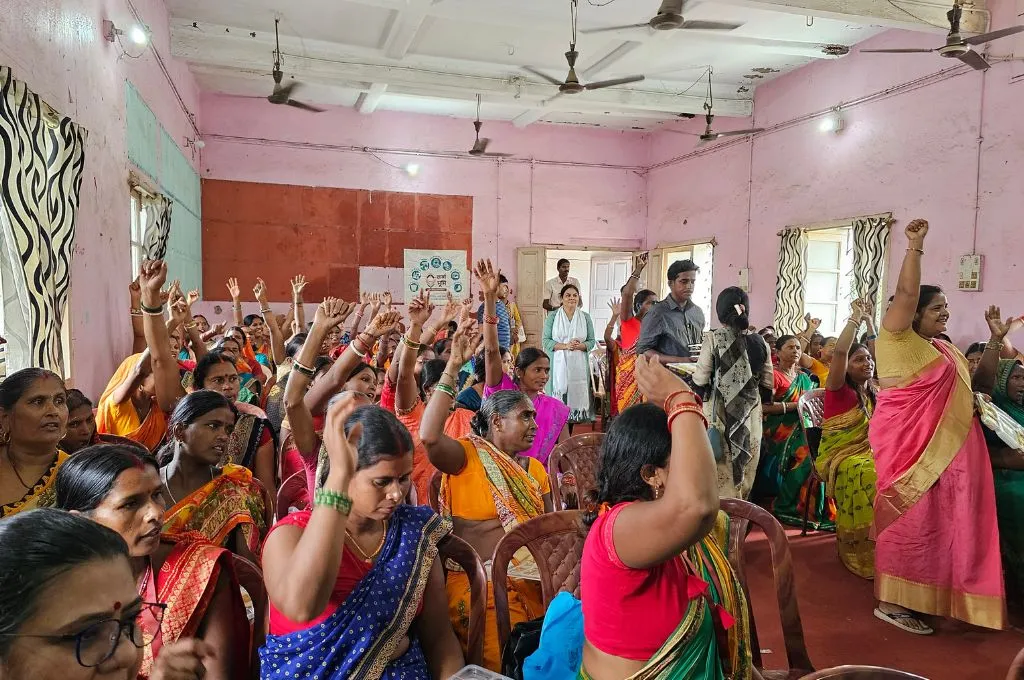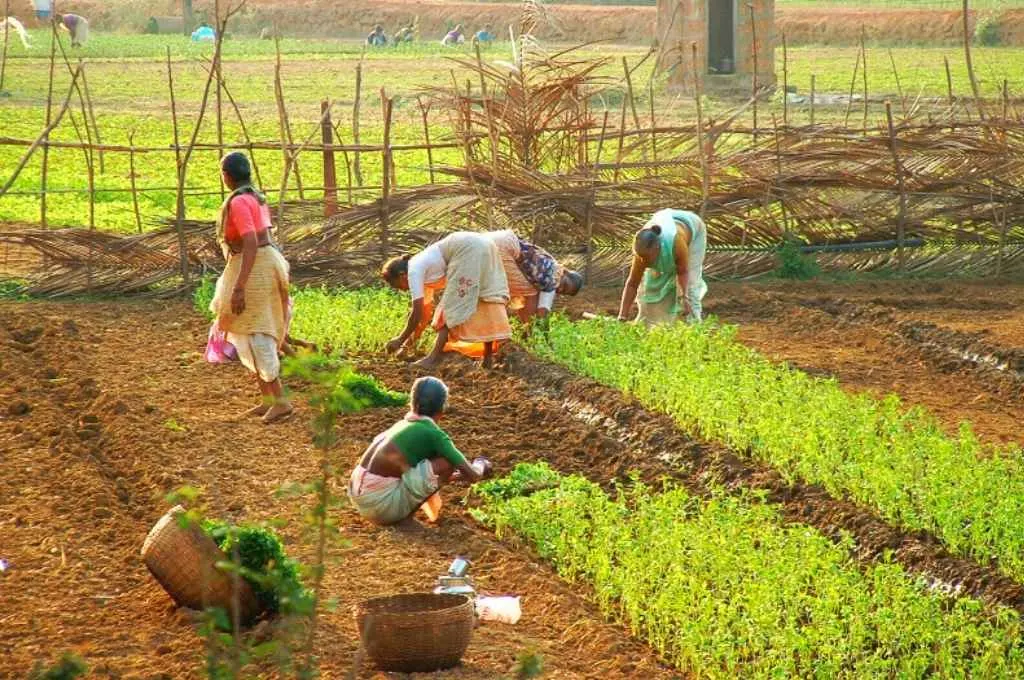The quality of our agricultural land has seen a massive decline in the past few decades. The water crisis is also getting worse day by day. Farmers have to spend more money to deal with these challenges, and agriculture is no longer a profitable option. If we wish to revive agriculture, which is an important part of our economy, then we have to invest in environmental resources such as water and soil. Gram swaraj, where the decision-making power regarding essential natural resources lies with the villagers, can prove to be a vital solution.
What is gram swaraj?
The term ‘swaraj’ often has political connotations, but its real meaning is self-rule, or being dependent on oneself. Gram swaraj is when the village is capable of fulfilling its needs on its own. The reason for initiating swaraj at a village level is that the rural system is dependent on farming, and natural resources such as water and soil play a major role in this. The concept of gram swaraj is based on everyone having equal rights over natural resources, and there being no reliance on the market for the supply of these resources. For the villagers, becoming self-dependent when it comes to these resources requires some changes in thought process and behaviour. For instance, if a village wants jal (water) swaraj, then it is essential for the people to display ownership and learn how to utilise water and conserve it. Similarly, to achieve swaraj in agriculture, the village should fulfil its food requirements first and only then sell the remaining harvest in the market. This helps cultivate a sense of responsibility towards the resources as well as self-reliance. To be precise, residents need to consider natural resources as their own while using them.
What is worrying, however, is that very few villages are self-reliant. After Independence, the ideology of ‘whatever isn’t mine belongs to the government’ gained prominence. On the contrary, the fundamental idea of swaraj is ‘what isn’t mine belongs to all of us’. It means that natural resources belong to everyone, and everyone has equal right over them. This idea promotes self-reliance among people. In its absence, they back out of their responsibilities and leave the management of the resources to the government.
This article discusses how gram swaraj can prove most effective in the management of natural resources such as land and water.

Swaraj begins with the village
The average size of cultivable land in India in 1970–71 was 2.3 hectares. It has reduced to 1.08 hectares in 2015–16. The rate of soil erosion is increasing because of the fragmentation of landholdings. On the other hand, the number of families that rely on farming is consistently rising—from 7 crore in 1951 to 12 crore in 2020.
More than 90 percent of the water available for human consumption is being used for irrigation. It’s indisputable that irrigation is important in growing agricultural production. But disregarding the environment and using water indiscriminately is putting a lot of pressure on water and land. The first step towards making up for such losses, and consequently towards gram swaraj, is people becoming self-reliant in every aspect of their life. Swaraj begins with the self, and when we talk about the self, land and water are most essential. Since we get grains from agriculture, the route to swaraj begins from the village.
Jal swaraj through farming
We see the problems around water and land as separate, but their solutions are interrelated. In the past, farmlands used to be prepared keeping water conservation in mind. Uneven fields, wide ridges (furrows), and the presence of trees would help retain groundwater. Vegetables and fruits such as ladyfinger and watermelon were grown on the ridges to help the water stay within the boundaries of the field. Farmers didn’t have to rely on external resources to irrigate their field. Modern farming techniques have led to a rise in the use of tractors—now fields are levelled, trees are cut, the ridge area is reduced. All of this results in water run-off and groundwater reduction. Farmers depend on electricity and external sources for irrigation, which has increased their cost of farming. This dependency has weakened the spirit of swaraj in villages because the principles of local management of resources and self-reliance are not being adhered to. Traditional, natural techniques can be revived to reduce the reliance on other sources and promote jal swaraj.
The gap between farmers and swaraj
If we were to consider the Adivasi way of life, limited needs and wants have restricted the over-exploitation of natural resources. They have been able to save resources for the future generation because of this philosophy. On the other hand, people are moving away from traditional techniques of natural farming to modern practices in order to fulfil market demand. The emphasis on cash crops because of this demand coupled with high prices has weakened farmers independence. The changing climate and financial stress force them to take decisions that reduce their self-reliance and take them away from traditional farming methods. There are two key reasons for this:
1. The introduction of wrong technology
If we take technology as an example, then tractors were promoted as beneficial for farmers, but the benefits remain limited to the market and companies. Fuel, equipment, and loans required for the tractors have affected farmer savings. Even though technology has made farming easier, its cost has had a deep impact on the financial stability of farmers. Modern techniques stop them from being self-reliant and increase their dependence on the market.
2. The game of market and cash crops
We can understand this with the example of soya bean. It wasn’t a part of India’s food chain, but the promotion of its benefits made it popular. Farmers were drawn towards soya bean cultivation even though it uses more pesticides and strains land and water resources. If farmers had cultivated crops like maize, the water and land would have been utilised judiciously. But the market and companies did not encourage this.
The web of technology, market, and cash crops has taken farmers far from swaraj. The sole way to get back on the path to swaraj is for farmers to focus on their own needs and natural resources.
What would it take to get there?
1. Accepting the philosophy of swaraj
Swaraj is an idea that starts with each one of us and then penetrates into the community. When the entire village decides on a crop and uses water judiciously, the crops that are grown will be appropriate for the local climate and conserve water. Additionally, if they buy as little as possible from the market, then the vision of swaraj will be fulfilled. The decisions regarding farming, water, health, and nutrition should be taken at a local level and necessitate an overhaul of our lifestyles.
2. Giving primacy to nutrition
Giving priority to nutrition means growing crops that are part of the local diet—what is in our field should reflect what is on our plates. If we eat bajra, then that’s what we should grow. But if we eat biscuits and bread, we must understand that they can’t be grown in our farms. We have to rely on the market for them. Farmers are making crop choices based on market demand, not nutrition. If a village decides that it will grow only what it consumes, then this dependence will reduce. This will in turn increase production and fulfil nutritional needs.
3. Respecting the soil
It is important for farmers to treat the soil as a living being. We don’t give medicines to a sick family member without conducting proper checks because we don’t want any harm to befall them. Similarly, farmers should consider all aspects before turning to pesticides for the soil—would a specific pesticide do more harm than good?
4. Taking your own decisions
When buying seeds, many farmers rely on big companies and seed producers, who reel farmers in by promising seeds with high yield and better quality. The truth is that the usage of these seeds increases the cost of farming. Chemicals and fertilisers are needed for them. This creates an additional burden on the farmer and affects their land and environment.
Conserving local seeds and increasing their use can reduce costs and create a sustainable, self-reliant system of farming. For instance, farmers in many regions of Rajasthan conserve bajra and jowar seeds, which leads to better yields. Using traditional methods of farming such as multi-cropping can be effective in maintaining soil fertility.
5. Using water wisely
It is important to conserve and harvest natural sources of water, such as rain, waterfalls, and rivers. Digging deep borewells to access water reduces the groundwater, and is creating a water crisis. We should plant crops that use less water, such as maize, jowar, bajra, and kodo. This will help in saving water and maintaining soil quality.
Swaraj can bring about self-reliance and prosperity in agriculture. It can create a system where farmers conserve local seeds, protect water, farm using natural methods, and become free from the pressures of the market to optimally use their land and resources.
Every village should save its water sources on its own. Rivers, ponds, and groundwater management should be the responsibility of the entire community, and water usage should be balanced. This model will alleviate the water crisis, and reduce the cost of farming and energy dependence. Embracing the principles of swaraj will make agriculture economically robust and create balance in the environment. It can contribute to a society where farmers believe in their community resources instead of in the market, and every village, every community fulfils its own needs. This swaraj of stability and well-being will make society stronger, safeguard the environment, and ensure sustainability for future generations.
—






